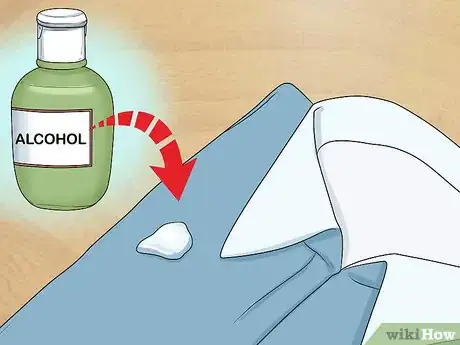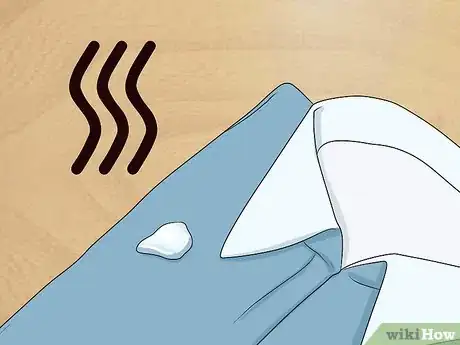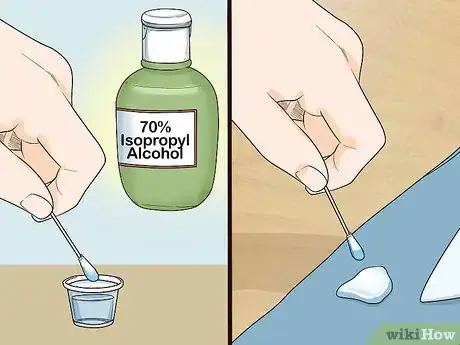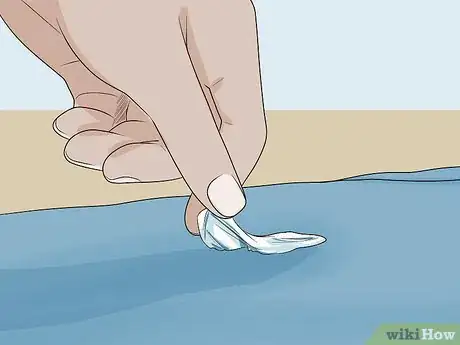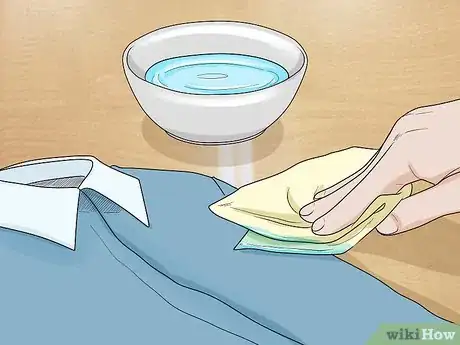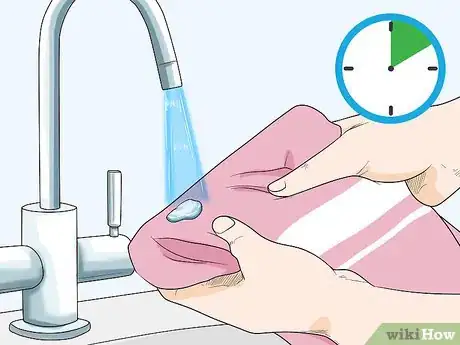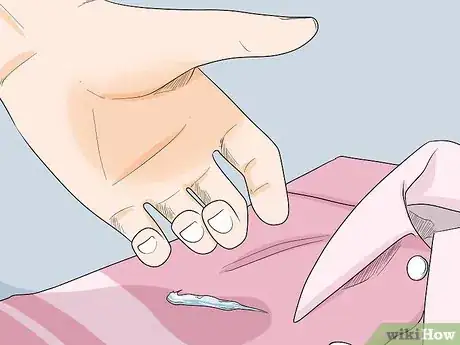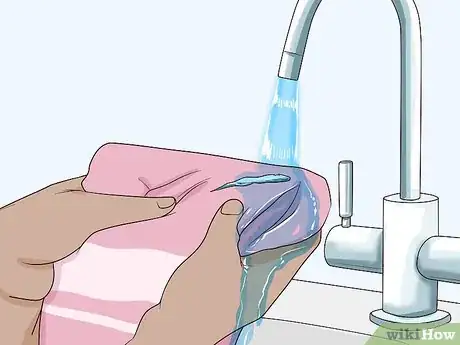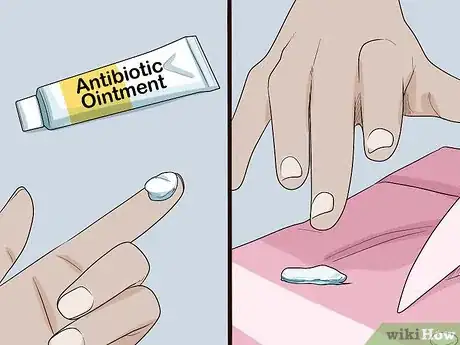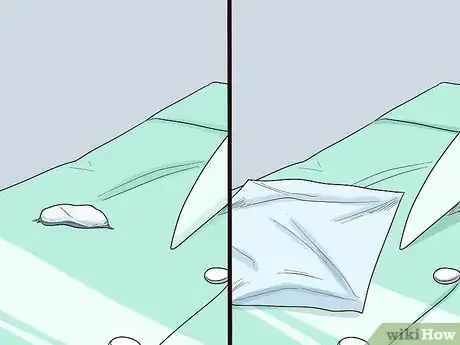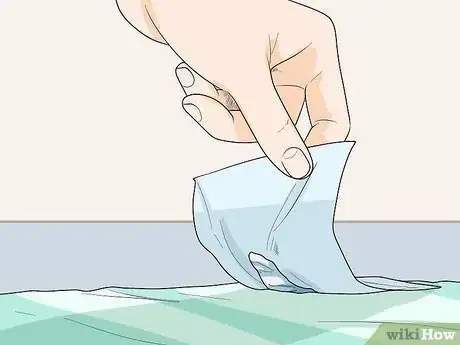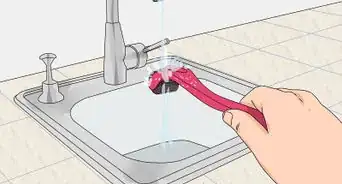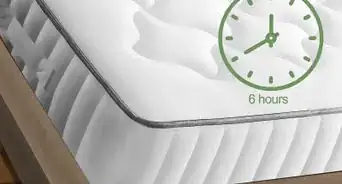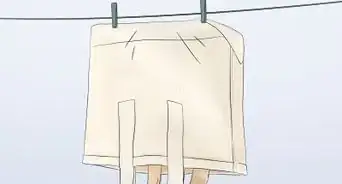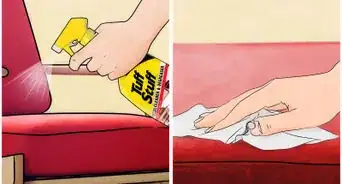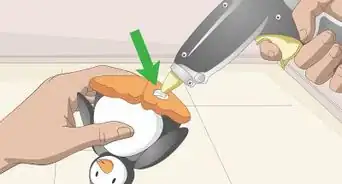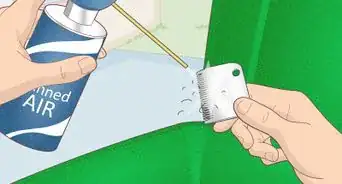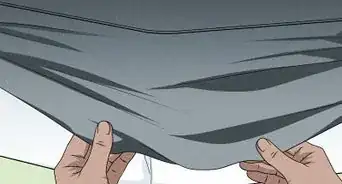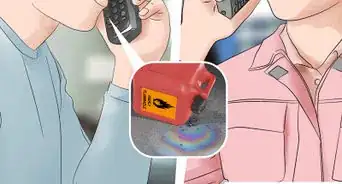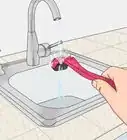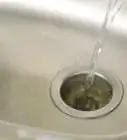This article was co-authored by wikiHow Staff. Our trained team of editors and researchers validate articles for accuracy and comprehensiveness. wikiHow's Content Management Team carefully monitors the work from our editorial staff to ensure that each article is backed by trusted research and meets our high quality standards.
This article has been viewed 104,727 times.
Learn more...
Do you have a little bit of craft project cleanup to do? While it seems like hot glue might be a bit of a pain to remove, it’s usually pretty easy. The trick is to figure out which technique and cleaning product you should use depending on where the hot glue dried. That’s why we’ve compiled all the info you’ll need so that you can safely and effectively remove the hot glue.
Things You Should Know
- Use rubbing alcohol to remove hot glue stuck to fabric or hard surfaces.
- Use olive oil to loosen hot glue stuck to skin.
- Iron a piece of scrap fabric over hot glue stuck to carpet to transfer the glue to the fabric.
Steps
Removing Hot Glue from Fabrics and Hard Surfaces
-
1Dab a small drop of alcohol on the surface to avoid damaging it. Some fabrics and woods with specific polishes may wear off. Placing a small amount of alcohol on the surface will show how the surface reacts to it before continuing. [1]
-
2Let the glue thoroughly dry. This allows you to easily remove the glue in one clump instead of dealing with a messy glob of liquid. Hot glue dries fairly quickly. [2]
- You can test the glue by placing a toothpick on it; if the clump is solid and no glue transfers to the toothpick, the glue has fully dried.
Advertisement -
3Soak a cotton swab into 70% isopropyl rubbing alcohol and dab around the glue. Isopropyl rubbing alcohol will react with the glue and it will loosen its grip on the surface. Wait a minute or so to allow the loosening to occur. [3]
-
4Peel the glue off with your fingers or a butter knife. If the glue is holding two objects together, first carefully remove one object before removing the glue from the other. You may need to dab more alcohol as you peel off the glue. [6]
- Avoid using only your fingernails as the glue may be tough. Use your entire finger or butter knife for more control.
-
5Clean the surface with water. After you have completely removed the glue, wipe the surface with water to clean off any remaining clumps of glue or drops of alcohol. Allow it to fully dry before using the object.
Washing Hot Glue off of Skin
-
1Place the affected area under running cold water for 10 minutes. This will help the glue quickly cool down and prevent further burning. You may alternatively run an ice cube over the glue if the burning is not too painful.
- If the affected area cannot be run under a faucet, place the area in a bowl of cold water for 10-15 minutes.
- Massage the area with your fingers while it is under the water to remove the outer layer of the glue.
-
2Wait for the glue to fully dry. Attempting to remove the glue while it is hot or still melted can cause deeper, more painful burns. Placing an ice cube over the glue may help it to harden quicker.
-
3Soak a cotton ball in olive oil and rub it on the affected area. This should loosen the glue from your skin and transfer it to the cotton ball. You may also use rubbing alcohol, but it may be painful if the skin underneath the glue is burned. [7]
- You should repeat this process until all of the glue is loosened. Use more olive oil or alcohol as needed.
- If the glue is not loosening, wash off the olive oil or alcohol and seek medical attention.
-
4Wipe the rest of the glue carefully off your skin. The glue should freely come off and not stick to your skin. Be careful not to pull any hairs out from the affected area.
- Avoid peeling the glue off with your fingernails or any object as it may be painful if the area is burned.
-
5Run the affected spot under cold water again. This will rinse the remaining oil off of the skin and provide further cooling to the affected spot. Make sure there is no remaining substance on or around the affected area. [8]
- To further subdue the pain, dab distilled vinegar to the area for a few minutes. You may then wash it off or leave it on the area.
-
6Apply an antibiotic ointment and a bandage. Dab the ointment around the entire affected area and secure it with a bandage or sterile gauze depending on the size of the area. You may additionally want to take over-the-counter pain medication as needed. [9]
- If the pain continues for more than 2 days, seek medical attention for the burn.
- You may develop a blister on the area. Do not pop it or irritate the area until it heals naturally.
- Replace the bandage or gauze and reapply antibiotic ointment as needed.
Cleaning Hot Glue from Carpet
-
1Place a scrap piece of fabric over the glue. Hot glue will stick to most fabrics better than carpet. Make sure the fabric is something you are able to toss out after removing the glue. [10]
-
2Heat an iron to medium-high heat and press it directly on the fabric over the glue. The iron should be pressed against the glue. Do not iron in a back-and-forth motion as this can cause the glue to spread over a larger area of the carpet. [11]
- Use gloves when handling the iron and fabric. The fabric will be hot and could cause pain or burning when touched.
-
3Check to make sure all of the glue has transferred to the fabric. Carefully set down the iron and lift the fabric from the carpet. If all of the glue has not been removed, use another piece of fabric and repeat the process. If this technique does not remove the glue, seek a carpet specialist to assist you. [12]
-
4Clean the affected carpet area with a carpet cleaner. After removing the glue, gently clean the area with a carpet cleaner to catch any small lumps of glue that may still be there.
- If you do not have any carpet cleaner, running over the area with water will also be effective.
Warnings
- Use gloves when removing hot glue so you do not irritate your skin with exposure to rubbing alcohol or oil.⧼thumbs_response⧽
- If you remove hot glue from your skin and the pain does not subside within 2 days, seek medical attention.⧼thumbs_response⧽
- Use gloves when handling the iron to avoid any potential burning to your hands.⧼thumbs_response⧽
Things You'll Need
For Fabrics and Hard Surfaces
- Rubbing alcohol or acetone solution
- Cotton swabs
- Water
For Skin
- Cotton balls
- Olive oil or rubbing alcohol
- Antibiotic ointment
- Bandage or sterile gauze
For Carpets
- Scrap piece of fabric
- Iron
- Carpet cleaner or water
References
- ↑ https://allkleencarpets.com/removing-hot-glue-upholstery/
- ↑ https://allkleencarpets.com/removing-hot-glue-upholstery/
- ↑ https://lifehacker.com/5676237/use-rubbing-alcohol-to-remove-hot-glue-from-nearly-anything
- ↑ https://www.sciencedirect.com/topics/biochemistry-genetics-and-molecular-biology/isopropyl-alcohol
- ↑ https://allkleencarpets.com/removing-hot-glue-upholstery/
- ↑ https://lifehacker.com/5676237/use-rubbing-alcohol-to-remove-hot-glue-from-nearly-anything
- ↑ https://healthfully.com/treat-hot-glue-gun-burn-6058321.html
- ↑ https://healthfully.com/treat-hot-glue-gun-burn-6058321.html
- ↑ https://healthfully.com/treat-hot-glue-gun-burn-6058321.html
About This Article
Before you remove hot glue from most surfaces, wait for the glue to thoroughly dry. Once it’s hard to the touch, soak a cotton swab in 70% isopropyl alcohol, dab around the edges of the glue, and wait for a minute. Then, peel off the glue with your fingers or a butter knife, and rinse the surface with water. To remove hot glue from your skin, run the area under cold water to speed up the drying process, then use a cotton ball soaked in olive oil to loosen the glue. To learn how to remove hot glue from other difficult surfaces, like carpet, keep reading!
